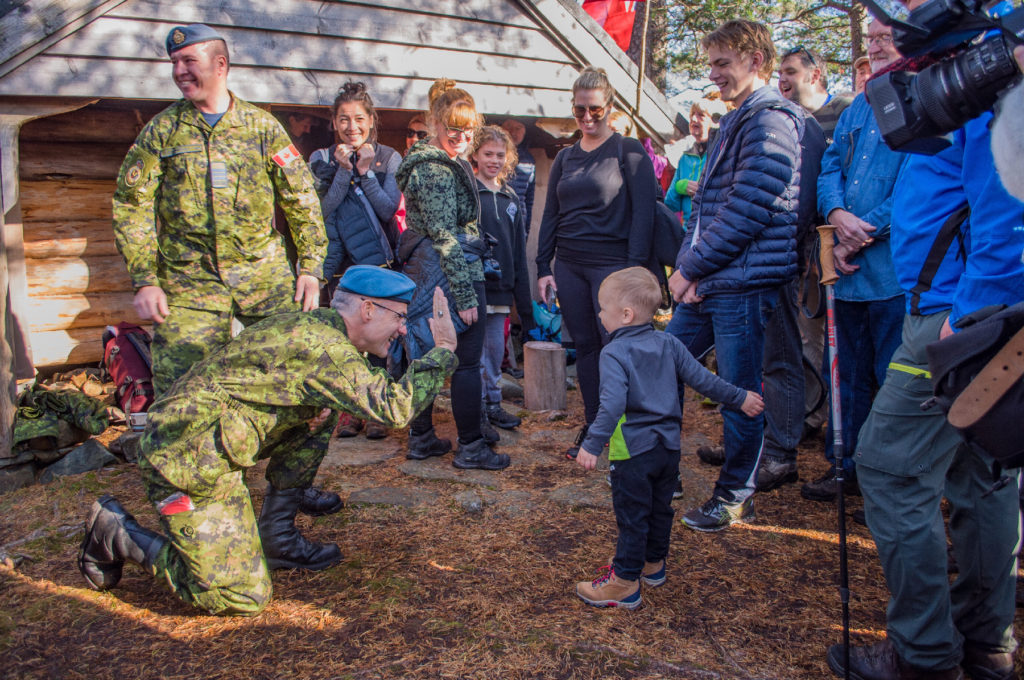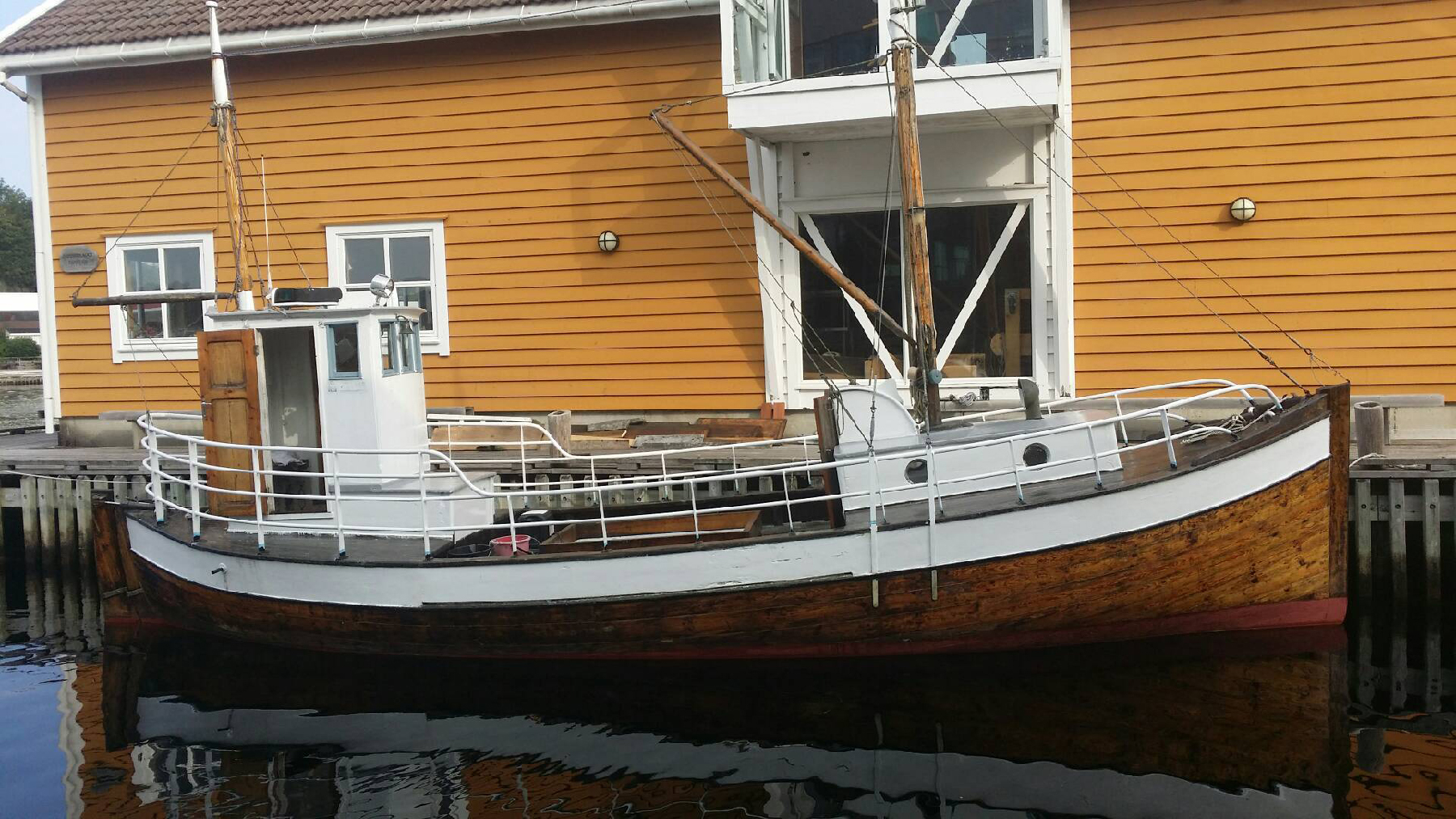Estimated reading time 9 minutes, 53 seconds.
Along a gently sloping hillside in Norway, some 300 people came together in early October 2019 to honour the courage and determination of six Royal Canadian Air Force (RCAF) aircrew, and of the members of Milorg, the Second World War-era Norwegian resistance movement, and local residents.

The story of the aircrew and their crash has the makings of a Hollywood movie.
The six-man crew of the Vickers Armstrong Wellington GR Mk XIV bomber from 407 Squadron, which was part of Coastal Command, were flying an anti-submarine patrol over Norwegian waters on Sept. 26, 1944, when one of the plane’s two engines caught fire.
The crew were forced to abort the mission and conduct an immediate landing. To do this, they had to dump fuel, as the jettison of fuel is an emergency safety procedure that allows an aircraft to get down to its appropriate and safe landing weight. Unfortunately, unknown to the crew, the engine fire had also affected the fuel gauge, so the crew inadvertently released most of their fuel.
Rather than risk ditching in the cold North Atlantic, the crew — FO Gordon Biddle (pilot) and FO George Deeth (second pilot), PO Kenneth Graham (wireless operator and air gunner); F/Lt Marion Neil (navigator); WO George Grandy (wireless operator and air gunner); and FS Harvey Firestone (wireless operator and air gunner) — elected to return to Nazi-occupied Norway to attempt an emergency landing.

By skill and by luck, all six members of the crew survived the crash unharmed. They found themselves on a peninsula near the town of Os, a municipality in Hordaland county, where 4,000 Nazi soldiers had been alerted to the Canadian crash and were amassing to reach the crash site as soon as possible.
The Canadians’ luck held and they came across local residents, first Marta Bruaroy and then her English-speaking neighbour, Ingeborg Bjornen, who assisted them. Risking execution from the Nazis for assisting the downed aircrew, they helped the Canadians hide in a small cave near Bjornen’s home. Her father and a neighbour then contacted Milorg to inform them about the Canadians.
While the Canadians were hiding in the cave, Nazi soldiers arrived and stayed at Bjornen’s house, only a few hundred metres from the cave entrance. Notwithstanding the danger, Bruaroy still managed to go up to the cave several times to take the airmen eggs, milk and hot tea.
Late in the evening, Bjornen and her neighbour led the airmen to the seaside. There, they met men from Milorg who rowed the crew across the open fjord and among the numerous islands along the coast, using two Oselvar rowing boats. They took the men to a boathouse on a nearby island, where the Canadians remained hidden for several days.
For further safety, the men were next taken to a small wooden cabin, soon nicknamed “Little Canada”, in the nearby mountains to hide while Milorg coordinated an escape for the Canadians from Norway back to Allied territory. During this entire time, the Nazi soldiers were searching for the Canadian crew, as they had very quickly realized that the crew had survived the crash.
After the airmen had spent a week in Little Canada, Milorg got the message to take them to the coast to start them on their way back to England. A small boat, the Snogg, carried the airmen to Austevoll, where they waited for some days because of bad weather in the North Sea. Eventually, on the night of Oct. 12, 1944, the Royal Norwegian Navy submarine chaser, His Norwegian Majesty’s Ship (HNoMS) Vigra, nicknamed the “Shetland Bus” and commanded by Capt Leif Larsen, arrived to take the men into Allied waters.

75th anniversary commemoration
The 75th anniversary commemoration was held in Os at the beginning of October 2019.
In attendance from Canada were Col Jeff Drummond, Canadian defence attaché to Norway; LCol Patrick Castonguay, commanding officer of 407 Long Range Patrol Squadron which is located at 19 Wing Comox, B.C.; and Chief WO Serge Harvey, squadron chief of 407 Squadron. Fifty-three descendants of the Canadian crew also came to commemorate their loved ones’ daring escape and the people who sheltered and assisted them.
The sole living survivor of the Norway crash, Firestone, of Victoria, B.C., was unable to attend but was well-represented by his family.
Descendants of Milorg members and of the civilians who helped the Canadians attended the commemoration, as did the Mayor of Os, Terje Soviknes; Capt Asmund Andersen, commander of Bergenhus Fortress; Capt Svein Erik Kvalvaag, commander of Haakonsvern Naval Base; and local residents. In total, more than 300 people attended the event.
This Second World War event resonates with the local people. Since the mid-1980s, an annual October hike to Little Canada has been held to honour the memories of the Milorg and their successful efforts to save the six Canadian aircrew.
The 75th anniversary commemoration was a three-day event. The first day was held for Canadian family members, RCAF representatives, Kvalvaag, and the local history group staff (Ove Haugland, Gaute Dyrdal, Mats Hjelle and Bjarne Ovredal). The attendees traced the first stage of the crew’s trek, from the crash site to the cave site, and from the cave site to the seaside. They then took a boat ride along the sea path, tracing part of the water route that was used to transport the men to the boathouse and along the coast. Drummond, together with about 40 Norwegian citizens, the descendants of the airmen’s local helpers, joined the boat tour.
The second day saw a formal ceremony at the crash site. Family members presented six flowers, for each of the Canadian crew. Soviknes opened the ceremony and Drummond read a letter on behalf of the Canadian Minister of Veteran Affairs and Associate Minister of National Defence Lawrence MacAuley. Castonguay spoke to the attendees, highlighting the charity, courage, and selflessness of everyone involved. Andersen also spoke, as did Rick Firestone, the son of WO Firestone.
A CP-140 Aurora, Canada’s modern anti-submarine warfare aircraft, carried out a flyby during the ceremony, marking a moment of silence for times long past.
The second day continued with a visit on board HNoMS Hitra (the sole surviving sister ship of HNoMS Vigra) at Os quay, together with the fishing boat Snogg and several Oselvar rowboats representing the “rescue fleet”. The second day ended at Oseana Art and Cultural Centre in Os. The municipality of Os invited 130 Canadian and Norwegian guests to a formal dinner and speeches marking the occasion.
On the third day, the annual hike to Little Canada was well-attended by local residents and Canadian visitors. Altogether, more than 300 people participated.
To give context to the risk taken by the Milorg and the local residents in 1944 in helping the six Canadians, one must understand the numbers. At the time, there were only 4,500 residents in the region of Os. After the emergency landing, 4,000 Nazi soldiers were searching that region for the Canadian aircrew. Nevertheless, at great risk to themselves and their families, the Norwegians helped the six Canadians return to their families in Canada.









As a Norwegian I can’t help but feel great pride for our people and our country
Tremendous acts of courage were performed by those that helped the Canadians. A lot of people risked their lives for those 6 airmen.